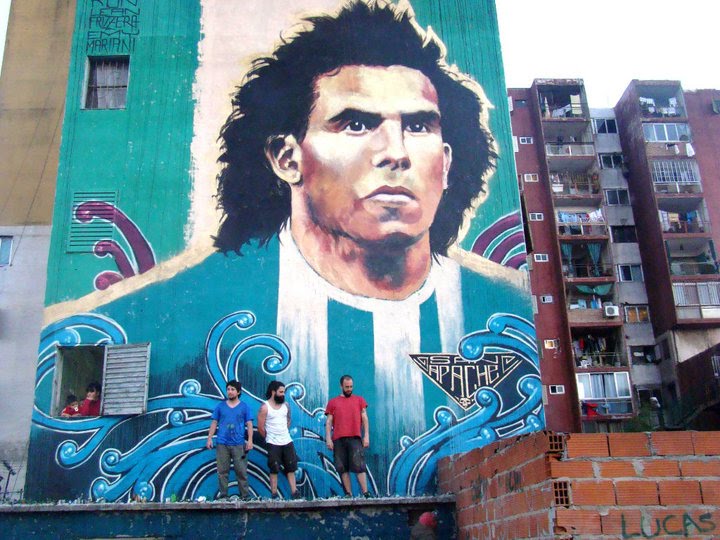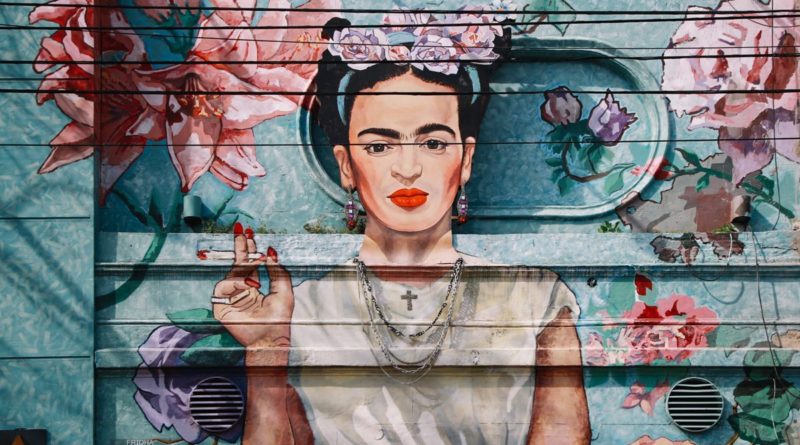Street Art in Argentina
Street art is now perhaps one of the most intriguing features of most modern metropolises. It graces the most unexpected nooks and crannies of central districts, popping up as small stencils in shady crevices or as dominating murals sprawled across whole building facades. It’s something that most of us wander past nonchalantly, offering a swift glance of recognition and perhaps nothing more.
Other travellers will dwell on the images they see, while many have argued that the street art of a place is symptomatic of its cultural, political and historical character; a sort of gateway into its past that affords travellers a distilled introduction to its people, their zeitgeist and particular nuances.
In Argentina, the street art is definitely of the latter sort. Amidst the bustling metropolitan streets of the downtowns of regional hubs like Cordoba, Mendoza and San Miguel de Tucuman, it can be found indiscriminately gracing the walls of modern sky scrapers and the frontispieces of post-colonial churches alike. And, while many visitors turn in disgust at the supposed lack of preservation and respect for modern and, more especially, old buildings, the locals are noticeably divided in their approach and opinion.
That’s not to say that all street graffiti in Argentina is now considered an artistic addition to the various downtown centres it decorates, but rather than a great many Argentinian locals have come to love their metropolitan centres precisely for the layers of human action and history they represent. Indeed, many celebrate them as a palimpsest of the country’s past, open books of haphazardly scrawled history that reveal the secret stories of the nation, where modern street art is simply the most recent entry.
 Perhaps nowhere in the country is this overtly historical role of Argentinian street art more obvious than in the endless criss-crossing blocks of Buenos Aires. It’s here that the great wealth of the nation’s street artists converge to display their masterpieces, making the downtown streets something like the Sistine Chapel of Latin graffiti work. What’s more, many commentators have noted how the street art of Buenos Aires bears all the cultural and political trademarks of the Argentinian zeitgeist, thus offering visitors and locals alike, a glimpse of the underlying tensions and concerns of the people here.
Perhaps nowhere in the country is this overtly historical role of Argentinian street art more obvious than in the endless criss-crossing blocks of Buenos Aires. It’s here that the great wealth of the nation’s street artists converge to display their masterpieces, making the downtown streets something like the Sistine Chapel of Latin graffiti work. What’s more, many commentators have noted how the street art of Buenos Aires bears all the cultural and political trademarks of the Argentinian zeitgeist, thus offering visitors and locals alike, a glimpse of the underlying tensions and concerns of the people here.
But what’s the reason for this artistic flowering, and why should people pay more attention to the sprawling murals of Buenos Aires than they do to the hipster graffiti art that peppers the streets of European capitals?
First off, the Buenos Aires local government has not pursued the same tight restrictions on street artists as their European city counterparts across the pond. Instead, they’ve urged would-be sprayers to get the permission of the property owner before starting their projects, meaning the edgy aspect of street graffiti has been entirely removed and artists here are now free to operate at a relaxed paced, during the day, and without the fear of reprisal.

This has attracted a great wealth of street artists to the capital of Argentina, with some seriously big names coming from right across Europe to do their thing. It’s also allowed local artists to thrive, and today guests can spy out murals like the 2013 portrait of Ernesto Sabato in Santos Lugares, the honorific wall-side of Carlos Tevez, by the famous local artist Argentine Martin Ron, or the 30-foot long so-called ‘Hand of God’ mural near Palermo, which raises questions about one of footballing history’s most controversial scores.
But the capital at Buenos Aires is riddled with the works of foreign artists as well, some of which deal with overarching political ideas that are noticeably close to home for many inhabitants of South America. One such is the building-sized baby mural by the Italian Blu, which depicts the mechanisation of a human from birth. It’s been interpreted as a visual repudiation of forced human labour or the exploitation of workers, while other works, like the so-called War Tortoise of Buenos Aires deals with more global issues, like armed conflict and the ignorance of the masses.
 In short, not only do the sprawling barrios and concrete urban centres of Argentina’s downtown districts make for a seriously apt blank-canvass for painters and artists looking to do street murals, but the relaxed regulations on public art along with a local fervour for the painters’ work, has made for a real kaleidoscope of illustration and mural in the capital. But it’s a phenomenon that’s not limited to Buenos Aires either, and guests can spy out some magnificent pieces of urban art in a great many of Argentina’s other metropolitan centres.
In short, not only do the sprawling barrios and concrete urban centres of Argentina’s downtown districts make for a seriously apt blank-canvass for painters and artists looking to do street murals, but the relaxed regulations on public art along with a local fervour for the painters’ work, has made for a real kaleidoscope of illustration and mural in the capital. But it’s a phenomenon that’s not limited to Buenos Aires either, and guests can spy out some magnificent pieces of urban art in a great many of Argentina’s other metropolitan centres.
